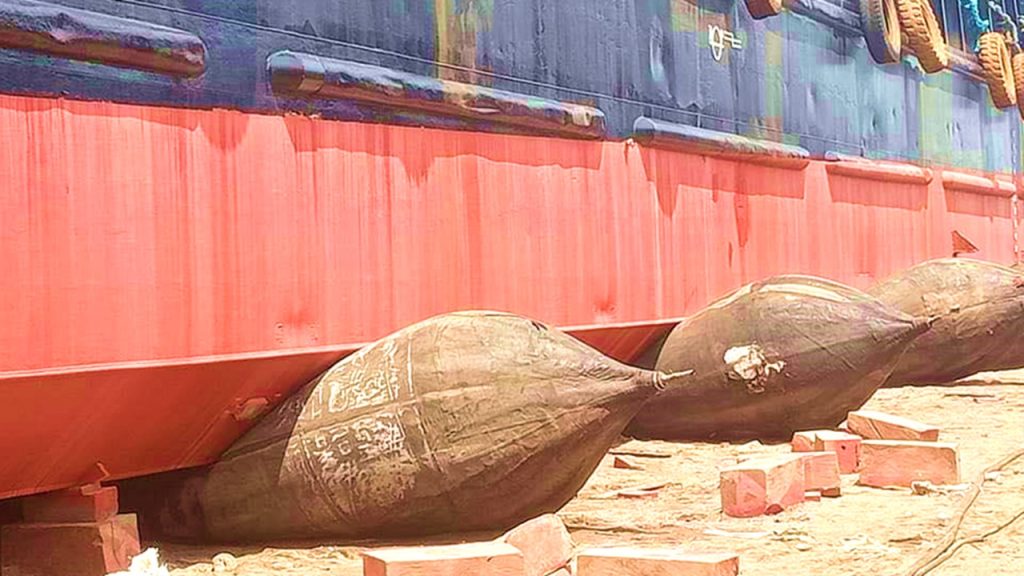Imagine standing on a bustling dockyard, surrounded by towering ships adorned with rusted metal and chipped paint. As you take in this scene, have you ever wondered about the secrets hidden beneath their weathered exteriors? Ship repair and maintenance are like two sides of a coin; both are essential for preserving these monumental vessels that navigate treacherous waters day after day. In this article, we will embark on an exhilarating journey through the complexities of ship repair and maintenance, uncovering just how these practices keep our marine industry afloat amidst unpredictable tides.
Click here to learn about our ship repair and maintenance capabilities in Tanza, Cavite, Philippines.
Understanding the Importance of Ship Repair and Maintenance in the Philippines
Ship repair and maintenance is a crucial aspect of the maritime industry in the Philippines. With its strategic location in Southeast Asia, the country has become a major hub for ship repair and maintenance services. The importance of these activities cannot be overstated, as they directly contribute to ensuring the safety and efficiency of vessels operating in Philippine waters.
First, regular ship repair and maintenance help to prevent accidents at sea. By conducting routine inspections, repairs, and upgrades, ships can address any potential issues before they escalate into larger problems that could compromise vessel integrity or lead to accidents. This not only protects the crew members on board but also safeguards valuable cargo being transported between ports.
Second, ship repair and maintenance play a critical role in maintaining the competitiveness of Philippine ports. Ships rely on efficient port operations for quick turnaround times, reducing overall costs associated with time spent in port. By offering high-quality repair services at competitive prices, local shipyards help attract more ships to dock at Philippine ports for necessary repairs and upgrades.
Therefore, investing in ship repair facilities is essential for sustaining growth and development in the maritime industry. It is through such investments that the Philippines can continue to position itself as a reliable destination for all types of vessels requiring repairs or maintenance services.

Ship Repair: Types of Ship Repairs Performed in the Philippines
Ship repair plays a vital role in maintaining the functionality and seaworthiness of ships. In the Philippines, a hub for maritime activities, various types of ship repairs are performed to ensure the longevity and safety of vessels. One of the most common types of ship repair conducted is dry docking. Dry docking involves taking a ship out of water and placing it on a dock or slipway for inspection, maintenance, and repairs. This process allows for a thorough examination of the hull, propellers, rudders, and other vital components below the waterline.
Another significant type of ship repair in the Philippines is machinery overhauling. As ships rely heavily on their engines and machinery systems to operate optimally at sea, regular overhauls are necessary to keep these crucial elements in top-notch condition. Machinery overhauling entails disassembling various parts of engines or machinery systems, thoroughly cleaning them, replacing worn-out components when needed, reassembling everything back together, and conducting extensive tests to ensure proper functioning.
In addition to dry-docking and machinery overhauling, other types of ship repairs commonly performed in the Philippines include painting and coating work to protect against corrosion; electrical system repairs; installation or replacement of navigational equipment; structural welding for hull strengthening or repairing damaged sections; as well as mechanical repairs such as pump rebuilding or valve servicing. The combination of these diverse types of ship repairs ensures that vessels operating in Philippine waters remain safe and seaworthy.
By providing an overview with examples like this–from routine tasks to major repairs, it becomes clear that the ship repair industry in the Philippines plays a crucial role in maintaining the integrity of vessels.
Dry docking is one of the most essential services offered by shipyards in the Philippines. It involves taking a ship out of the water and placing it on a dry dock for maintenance and inspection purposes. This allows for easy access to different parts of the vessel, including its hull, propellers, and rudders. During dry docking, any necessary repairs or replacements can be carried out, such as fixing cracks or corrosion in the hull, replacing worn-out propellers, or inspecting and repairing the rudders. This process is vital for ensuring that the ship remains seaworthy and safe to operate.
Another critical service provided by Philippine shipyards is engine repairs and maintenance. Ships rely on their engines to power them through the water, so it is crucial to keep these engines in optimal condition. Ship repair facilities in the Philippines have skilled technicians who are trained in diagnosing and fixing a wide range of engine issues. They can conduct routine maintenance tasks like oil changes, filter replacements, and belt adjustments to keep the engines running smoothly. In case of more complex problems, such as overheating or mechanical failures, these technicians have the expertise to disassemble and repair the engines.
Additionally, shipyards in the Philippines offer electrical system repairs and upgrades. Ships depend on a well-functioning electrical system for various operations like navigation, communication, lighting, and powering essential equipment onboard.

Ship Maintenance: The Ongoing Care and Upkeep of Ships in the Philippines
Ship maintenance is a crucial aspect of ensuring the safe and efficient operation of vessels in the Philippines. With the country being an archipelago, maritime transportation plays a vital role in connecting islands and facilitating trade. Therefore, it is imperative that ships are well-maintained to minimize downtime and ensure passenger and cargo safety.
One key factor that sets ship maintenance apart from ship repair is its ongoing nature. While ship repair focuses on fixing specific issues or damages, ship maintenance involves regular inspections, cleaning, lubrication, and preventive measures to prevent costly breakdowns or failures. This proactive approach helps to extend the lifespan of ships while also identifying potential problems before they become major concerns.
In addition to routine maintenance tasks such as hull cleaning and painting, engine servicing, and electrical system checks, there are also regulatory requirements that need to be adhered to. The Philippine Maritime Industry Authority (MARINA) mandates regular inspections of ships’ safety equipment like lifeboats, fire extinguishers, navigation lights, etc., as well as documentation audits.
Effective ship maintenance relies on skilled personnel who are equipped with knowledge about industry standards for vessel upkeep. With continuous care and proper attention given to ships in the Philippines’ waters, these vessels can continue their vital role in connecting communities and supporting economic growth across the archipelago.
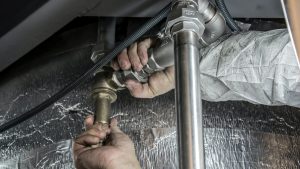
Key Differences: Highlighting the Distinctions Between Ship Repair and Maintenance in the Philippines
Ship repair and maintenance are two distinct processes that are often confused with each other. While both activities involve the upkeep of ships, they differ in their objectives and scope. Ship repair primarily focuses on fixing specific damages to ensure the vessel’s seaworthiness and safety. In contrast, ship maintenance involves routine inspections, preventive measures, and regular servicing to address potential issues before they become major problems proactively.
One key distinction between ship repair and maintenance lies in the level of expertise required. Ship repairs generally demand specialized skills and knowledge as professionals need to diagnose and rectify complex mechanical or electrical failures within a limited timeframe. On the other hand, ship maintenance tasks can be handled by a broader range of technicians who focus primarily on scheduled checks, lubrication, cleaning, or minor replacements.
Another factor that sets ship repairs apart from routine maintenance is their cost implications. Repair work is typically more expensive due to its urgent nature and the need for replacement parts or specialized equipment. In contrast, maintenance costs are often budgeted as part of regular operating expenses since they are planned activities carried out at specific intervals to uphold standard performance levels.
While it may seem like ship repair and maintenance are interchangeable terms used to describe similar processes in the maritime industry in the Philippines, understanding their distinctions is crucial for efficient vessel management. By recognizing the objectives and scope of each activity along with the associated expertise requirements and cost implications, shipping companies can make informed decisions regarding when to conduct repairs versus focusing on preventive measures through ongoing maintenance protocols.

Here are the 7 key differences in ship repair and maintenance in the Philippines:
1. Scope: Exploring the Areas Covered in Ship Repair and Maintenance in the Philippines
Ship repair and maintenance in the Philippines encompasses a wide range of areas, each crucial to ensuring the smooth operation and longevity of vessels. One key aspect is mechanical work, which involves inspecting and repairing machinery and equipment such as engines, pumps, and piping systems. This includes tasks like overhauling engines, replacing worn-out parts, and conducting regular maintenance checks to prevent breakdowns.
Another important area is electrical work. Vessels rely on an intricate network of electrical systems for various functions ranging from illumination to navigation. Thus, ship repair teams also handle tasks such as troubleshooting electrical issues, repairing wiring circuits, installing new electrical components, and conducting inspections to ensure compliance with safety standards.
In addition to mechanics and electrics, ship repair often involves structural repairs. Over time, the constant exposure to challenging conditions at sea can lead to wear and tear on a vessel’s hull or other structural components. Ship repair teams are responsible for assessing damages caused by corrosion or accident impacts and performing necessary repairs or reinforcements using techniques like welding or steel fabrication.
Overall, ship repair in the Philippines covers a wide scope that comprises not only mechanical aspects but also electrical systems and structural integrity. Ensuring proper maintenance in these areas allows ships to operate efficiently while minimizing downtime due to unexpected failures. From engines to electrics to structures – every component plays a significant role in keeping vessels seaworthy for their journeys across the oceans.

2. Planning and Execution: Key Differences in Ship Repair and Maintenance in the Philippines
One of the key differences in ship repair and maintenance in the Philippines lies in the planning and execution processes. In ship repair, there is often a detailed and thorough planning phase before any work can begin. This includes identifying the specific repairs needed, developing a timeline, and coordinating with various vendors or contractors. On the other hand, ship maintenance tends to be more proactive, with regular checks and inspections carried out to identify any potential issues before they escalate into major problems.
The execution phase also differs between ship repair and maintenance in the Philippines. In ship repair projects, there is typically a higher level of urgency involved as vessels may be taken out of service during this time. This requires precise coordination between different trades, such as welders, electricians, and plumbers, to ensure that repairs are completed efficiently without compromising on safety standards. In contrast, ship maintenance tasks are often carried out while the vessel is still operational, allowing for more flexibility in scheduling work and minimizing disruptions to daily operations at sea.
By understanding these key differences in planning and execution between ship repair and maintenance in the Philippines, stakeholders can better manage their expectations when it comes to undertaking these tasks. Whether it’s carrying out repairs or implementing preventive maintenance measures on ships, careful planning and efficient execution will ultimately contribute to safer voyages and prolong the lifespan of vessels operating within Philippine waters.

3. Processes: Examining the procedures involved in Ship Repair and Maintenance in the Philippines
When it comes to ship repair and maintenance in the Philippines, there are several key processes that set it apart from other countries. One of these processes is dry docking, which involves transferring a ship onto a dry dock for inspection and repairs. In the Philippines, this process is efficiently done due to the country’s strategic location near major shipping lanes, as well as its skilled labor force specializing in ship repair.
Another important process in ship repair and maintenance in the Philippines is hull cleaning and painting. Ships need regular cleaning and painting to prevent corrosion and maintain their structural integrity. The Philippines has a highly skilled workforce trained in various techniques for cleaning and painting ships, ensuring that they are able to meet international standards.
Lastly, one unique aspect of ship repair and maintenance in the Philippines is the use of cutting-edge technology. Advanced welding techniques such as laser welding are employed to ensure precise repairs, while underwater inspection using remotely operated vehicles (ROVs) helps identify any potential issues without requiring dry-docking. These technological advancements contribute to quicker turnaround times for repairs and minimize disruption to maritime operations.
The processes involved in ship repair and maintenance in Cavite, Manila, Cebu, Navotas, Batangas, Zambales, and Davao highlight its expertise and competitiveness in providing high-quality services to global maritime industries. With its strategic location, skilled labor force, and emphasis on technology adoption, the Philippine ship repair industry continues to grow and attract both local and international clients seeking top-notch services at competitive prices.

4. Expertise: Highlighting the Skills Required for Ship Repair and Maintenance
When it comes to ship repair and maintenance in the Philippines, expertise is crucial. Ship repair requires a unique set of skills that are specific to the Philippine maritime industry. From welding and fabrication to electrical and mechanical engineering, ship repair Filipino workers must possess a diverse range of abilities. In addition to technical skills, they must also have a deep understanding of safety protocols and regulations.
One of the key skills required for ship repair is problem-solving. Ships are complex structures with various systems interconnected, so being able to identify and fix issues is essential. Whether it’s repairing engine components or fixing leaks in the hull, ship repair professionals need to be skilled problem solvers who can quickly diagnose problems and find effective solutions.
Another skill that sets Filipino expert ship repair workers apart is attention to detail. When working on ships, even the smallest oversight can have catastrophic consequences. From ensuring proper alignment during reassembly to meticulously inspecting pipes for corrosion or cracks, diligent attention to detail is crucial in order to maintain the safety and functionality of a vessel.
Expertise in ship repair requires a combination of technical knowledge, problem-solving abilities, and attention to detail. By highlighting these specific skills required for this field, we gain a deeper appreciation for the expertise needed to maintain our ships in the Philippine Sea safely and efficiently.
In addition to attention to detail, ship repair Filipino professionals must also possess a strong understanding of various mechanical and electrical systems. Ships are complex machines with intricate networks of components that must work together seamlessly. A thorough knowledge of these systems is essential for identifying and resolving any issues that may arise during the repair process.
Moreover, problem-solving skills are indispensable in the industry of ship repair in Tanza, Cavite, Philippines. Often faced with unique challenges, such as limited resources or time constraints, professionals in this field must think creatively to find innovative solutions. They must be able to quickly assess the situation, analyze the problem, and come up with effective strategies to tackle it. This requires a combination of technical expertise and critical thinking abilities.
In addition to technical skills, ship repair Filipino professionals must also possess strong communication and teamwork skills. Repairing a ship is rarely a one-person job; it requires collaboration with colleagues, subcontractors, and clients. Effective communication ensures that everyone involved in the repair process is on the same page regarding goals, timelines, and any potential challenges that may arise.
Furthermore, ship repair Filipino professionals need to be adaptable and resourceful. Every boat or vessel is unique, with its own set of specifications, equipment, and structural issues. As such, Filipino repair crews must be able to quickly adapt their skills and knowledge to the specific needs of each vessel. They must also be resourceful in sourcing materials and equipment needed for repairs, as well as finding creative solutions when faced with unexpected obstacles.
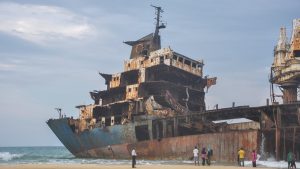
5. Timeframe: Comparing the Duration Between Ship Repair and Maintenance
When it comes to comparing the duration between ship repair and maintenance in the Philippines, one thing is clear: they involve different timeframes. Ship maintenance is an ongoing process that includes regular inspections, cleaning, and minor repairs. This can be done on a daily or weekly basis and usually takes a few hours to a couple of days. On the other hand, ship repair involves major overhauls or extensive fixes that require more time and resources. Depending on the size of the vessel and the extent of the damage, ship repairs can take anywhere from a few weeks to several months.
The longer timeframe for ship repairs is primarily due to the complexity of the work involved. Unlike maintenance tasks, which are relatively straightforward and routine, repairing a ship requires careful planning, coordination with various stakeholders, sourcing of materials and spare parts, as well as skilled labor. Moreover, unexpected issues can arise during repairs that may extend the duration even further. It’s worth noting that in some cases where major structural damage has occurred, or extensive refurbishment is needed, ships may even be out of service for several years.
While ship maintenance focuses on keeping vessels in good operating condition on an ongoing basis through regular inspections and minor fixes spanning just hours or days at most, ship repair is comprehensive work aimed at addressing significant issues with vessels that typically takes weeks to months to complete depending on factors such as vessel size, damage extent, and availability of materials & expertise. By understanding these differences in the timeframe between ship repair and maintenance, you can better appreciate why both processes are important for ensuring the safe and efficient operation of ships in the Philippines.
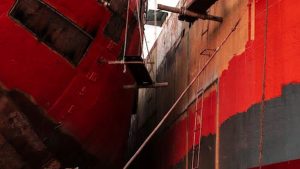
6. Impact on Ship’s Lifespan: Comparing the Impact Lifespan Between Ship Repair and Maintenance
One of the crucial factors that directly affect a ship’s lifespan is the comparison between ship repair and maintenance in Cebu, Navotas, Subic Bay, Batangas, Cavite, and Manila. While both are essential for ensuring a vessel’s reliability, they have distinctive impacts on its overall longevity. Ship repair involves fixing significant damages or structural issues that may compromise the vessel’s functionality, such as engine breakdowns or hull cracks. On the other hand, ship maintenance focuses on regular inspections, cleaning, and routine repairs to prevent any potential problems from escalating.
Ship repair plays a pivotal role in extending a vessel’s lifespan by addressing major concerns that can significantly damage its structure or systems. It allows for necessary repairs to be carried out promptly before they worsen and become more expensive to fix. Additionally, thorough inspections during ship repairs enable the identification of hidden defects and potential risks that can jeopardize the ship’s safety at sea. By adequately managing these repairs, ships can often sail longer without facing any major setbacks.
However, while an emphasis on ship repair is vital for maintaining a healthy vessel for an extended period, it should not overshadow the significance of regular ship maintenance. Maintenance activities contribute to avoiding potential damages and deterioration by identifying minor issues in their early stages. These proactive measures help extend a ship’s life expectancy by addressing small problems before they escalate into larger ones that require significant repair work.
While both ship repair and maintenance in Tanza, Cavite, Philippines, play indispensable roles in preserving a vessel’s lifespan, special attention must be given to each process due to their unique impacts. Repair work helps handle major damages that could pose severe risks to the ship’s safety and functionality. This includes fixing structural issues, repairing propulsion systems, and addressing any electrical or mechanical failures.
Ship repair in Tanza, Cavite, involves a comprehensive assessment of the vessel to identify areas that require immediate attention. Skilled technicians and engineers meticulously inspect every aspect of the ship, including its hull, machinery, navigational equipment, and safety systems. Once the assessment is complete, a detailed plan is formulated to address all identified repairs.
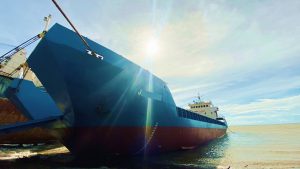
7. Costs: Comparing the Financial Implications Between Ship Repair and Maintenance
When it comes to ship repair and maintenance, one of the key factors that need to be considered is the financial implications. The costs associated with ship repair can often outweigh those of regular maintenance, and it is important to understand these differences before making any decisions.
Ship repair involves fixing major structural or mechanical issues that may have occurred due to wear and tear or accidents. This kind of repair work can be extremely costly, as it often requires specialized equipment and skilled labor. In contrast, ship maintenance consists of routine tasks such as cleaning, lubricating machinery, and replacing small parts. While there are still costs involved in regular maintenance, they tend to be much lower compared to repairs.
The financial implications of ship repair versus maintenance go beyond just the upfront costs. Repairing a ship can result in significant downtime for the vessel, especially if it needs to be taken out of service for an extended period of time. This downtime means lost revenue for shipping companies that rely on their fleet’s operational efficiency. On the other hand, well-maintained ships are more likely to encounter fewer breakdowns and require less time in dry dock, translating into better profitability in the long run.
It is crucial for shipping companies to carefully consider both short-term costs and long-term benefits when deciding between ship repair or maintenance. While repairs may seem like a substantial investment at first glance, neglecting proper maintenance can potentially lead to more frequent breakdowns down the line. By focusing on preventive upkeep through regular inspections and servicing, companies will not only
One of the key factors that Filipino ship owners and operators consider when choosing a location for ship repair and maintenance is the cost. The financial implications of these activities can vary greatly depending on the country or region. When comparing the costs in the Philippines, one might find that they are significantly lower than in other parts of the world.
The labor cost in the Philippines is a major contributing factor to this advantage. With a relatively low cost of living and wages, shipyards in the country are able to offer competitive pricing for their services. Additionally, materials such as steel and paint tend to be more affordable in this region, further reducing overall costs for repairs and maintenance.
Furthermore, there may be certain tax incentives or government support programs available to ship owners who choose to have their vessels repaired or maintained in the Philippines. This can further alleviate some of the financial burden associated with these activities.
Overall, when considering ship repair and maintenance options, it is important to take into account not only the quality of work but also the financial implications. The favorable cost landscape in the Philippines makes it an attractive destination for those looking to save money while still receiving high-quality services.

Importance of Ship Repair and Maintenance: Exploring the Significance in Ensuring Optimal Performance and Safety in the Philippines
Ship repair and maintenance play a crucial role in ensuring optimal performance and safety of ships in the Philippines. As an archipelago consisting of over 7,000 islands, the country heavily relies on maritime transportation for trade and economic growth. Ships are not only essential for transporting goods and people but also serve as defense vessels for national security. However, without regular repair and maintenance, these ships can quickly deteriorate, compromising their efficiency and putting lives at risk.
One significant aspect of ship repair and maintenance is ensuring compliance with international standards and regulations. The Philippines has been recognized as one of the leading countries in the maritime industry, with its shipyards adhering to strict rules set by various international organizations such as the International Maritime Organization (IMO). By maintaining high-quality standards in ship repairs, the Philippines contributes to maintaining the global reputation of safe maritime operations. This not only attracts foreign shipping companies but also boosts local businesses involved in the shipbuilding and repair industries.
Moreover, timely repairs and maintenance help prolong the lifespan of ships in operation. Regular inspections identify any potential issues or wear-and-tear that may affect a vessel’s performance or structural integrity over time. Addressing these problems promptly through proper maintenance procedures ensures that ships remain seaworthy for longer periods. By extending their lifespan, ship owners are able to maximize returns on investment while minimizing environmental impact through reduced scrap metal waste from premature decommissioning.
Ship repair and maintenance in Tanza, Cavite, are vital aspects of the maritime industry due to their direct impact on optimal vessel performance, safety, and sustainability. These activities not only contribute to the longevity of ships but also play a significant role in ensuring the smooth operation of maritime trade and transportation.
Furthermore, ship repair and maintenance services in the Philippines provide employment opportunities for skilled workers and technicians. The industry creates jobs for welders, electricians, mechanics, engineers, and various other professions involved in maintaining and repairing vessels. This helps drive economic growth by generating income for individuals and contributing to the overall development of local communities.
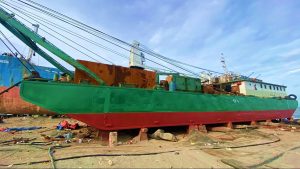
Challenges Faced: Comparing and Addressing Common Humps Between Ship Repair and Maintenance
One of the most common challenges in both ship repair and maintenance in the Philippines is the availability of Filipino skilled labor. The maritime industry often faces a shortage of qualified technicians and engineers who have specific expertise in ship repair and maintenance. This can lead to delays in repair projects and increased costs as companies struggle to find and retain skilled workers.
Another challenge is the issue of cost estimation. Ship repair and maintenance projects in Manila, Cebu, Zambales, Navotas, and Cavite can be complex, with multiple variables that can affect the final cost. It can be difficult to accurately estimate how much a particular repair or maintenance project will cost, leading to budgetary issues for ship owners or operators. Additionally, unexpected problems may arise during the course of a project, requiring additional funds and further complicating the budgeting process.
To address these challenges, shipyards and maritime organizations in the Philippines are adopting new technologies such as automation systems, data analytics, and predictive maintenance. These technologies help optimize processes by providing real-time information on equipment conditions, allowing for proactive measures to prevent breakdowns or failures. Moreover, companies are investing in training programs to enhance the skills of their workforce and ensure that they have a pool of talented professionals readily available.
While ship repair and maintenance in the Philippines face several common challenges, such as skilled labor shortage and cost estimation issues, innovative solutions are being implemented to address these hurdles effectively. By embracing new technologies and investing in workforce development programs, organizations aim to improve operations efficiency while minimizing downtime costs associated with repairs or maintenance activities on ships.
Are You Looking for the Best Ship Repair and Maintenance Company in the Philippines?
When it comes to ship repair and maintenance in the Philippines, one company stands out among the rest: Amaya Dockyard & Marine Services Inc (ADMSI). With their commitment to providing cost-effective solutions and innovative services, they have earned a reputation as the best in the business.
- Email us: info@amayadockyard.com
- Call our 24-hour hotline: +63 917 633 0479
- Viber: +63 917 633 0479
- WhatsApp: +63 917 633 0479
- Facebook Messenger: Click here
- Click here to inquire
One of the key factors that sets ADMSI apart from other companies is its state-of-the-art facilities. Equipped with modern technology and equipment, they are able to offer comprehensive repair and maintenance services for all types of ships, from small vessels to large ocean liners. Their team of highly skilled engineers and technicians is trained to handle complex repairs and ensure maximum efficiency.
In addition to its superior facilities, ADMSI also prides itself on its commitment to customer satisfaction. They understand that every client has unique needs and strive to tailor their services accordingly. Whether it’s a routine maintenance check or a major repair project, ADMSI works closely with its clients every step of the way to ensure that expectations are met or exceeded. Their dedication to providing cost-effective solutions ensures that clients receive the highest quality service at competitive prices.
With an exceptional track record and a passion for excellence in ship repair and maintenance, Amaya Dockyard & Marine Services Inc. is undoubtedly the best choice in the Philippines. If you’re looking for top-notch service backed by years of industry expertise, look no further than ADMSI.

Final Thoughts: 7 Main Differences of Ship Repair and Maintenance
In conclusion, while ship repair and maintenance in the Philippines may seem similar in nature, there are crucial differences between the two processes. First and foremost, ship repair is a reactive measure to address specific issues or damages on a vessel, whereas maintenance is more of a proactive approach aimed at preventing potential problems. Additionally, the scope of work differs for both, with repair often involving extensive renovations or replacements, while maintenance focuses on routine checks and small-scale repairs.
Another key distinction lies in the timeframe required for each task. Ship repair typically has a set deadline due to the urgency of resolving issues that could affect the vessel’s operation. On the other hand, maintenance is an ongoing process with periodic inspections and upkeep performed throughout a ship’s lifespan.
Moreover, when it comes to costs, repair tends to be more expensive than maintenance as it involves major repairs and equipment replacement. Maintenance costs are relatively lower since they involve regular upkeep and minor parts replacements. These financial considerations make proper planning vital for shipping companies to manage their budgets for both tasks efficiently.
Lastly, ownership plays a significant role in determining whether an activity falls under repair or maintenance. While owners are usually responsible for repairs resulting from accidents or unforeseen events regardless of contractual agreements, routine preventive maintenance expenses are generally borne by charterers or lessees.
By understanding these seven main differences between ship repair and maintenance in the Philippines (and globally), shipping companies can develop effective strategies to ensure their vessels are well-maintained and operate optimally throughout their service lives.

